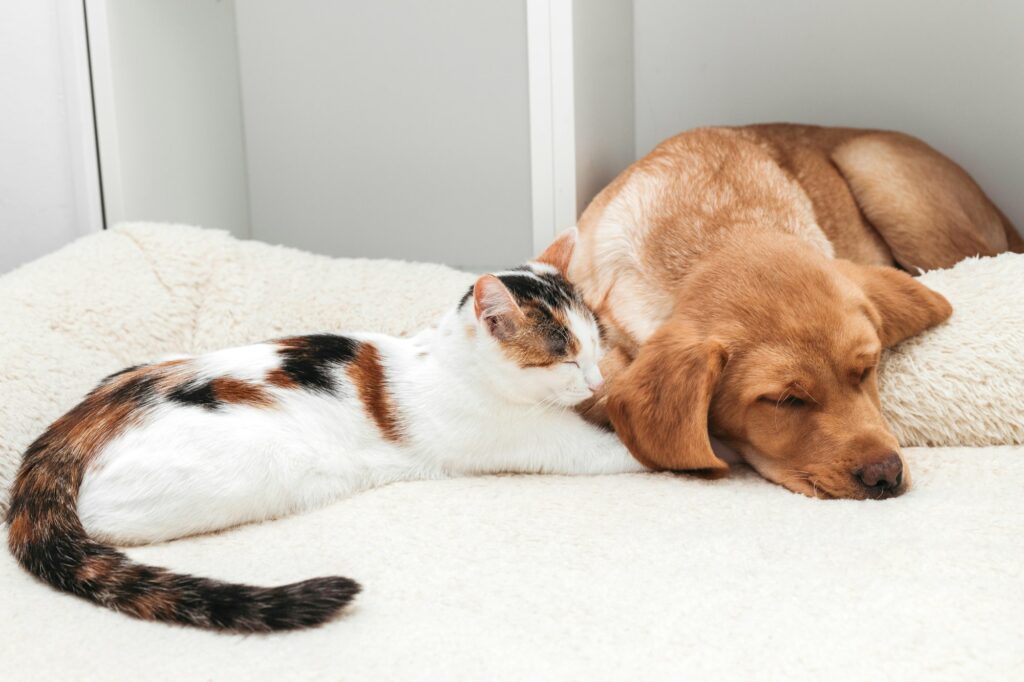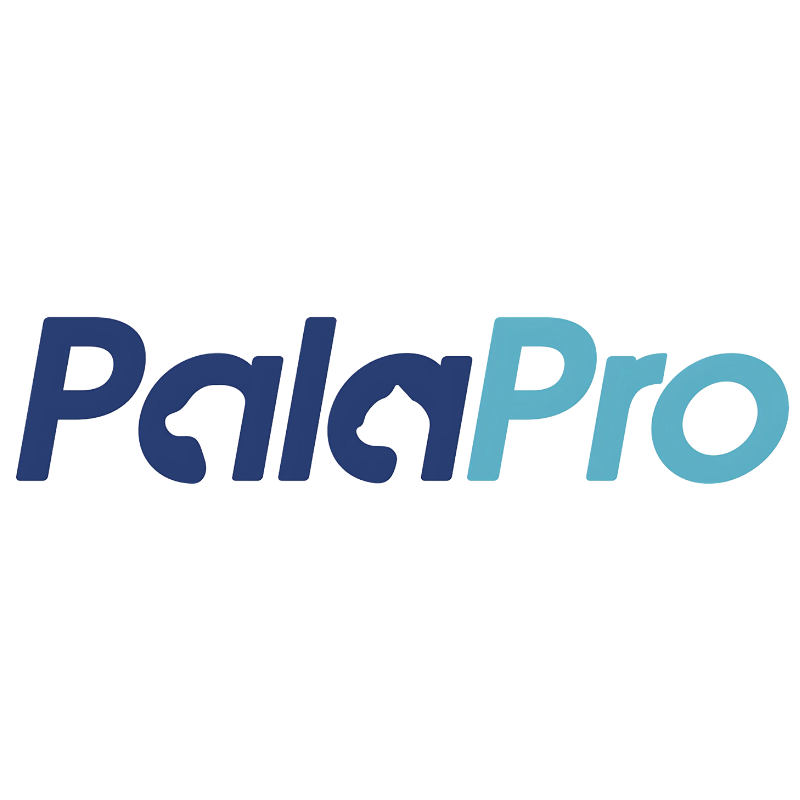Hydrolyzed Chicken Digest
Hydrolyzed Chicken Digest A Proven Palatability Enhancer for Modern Pet Food Applications In today’s competitive pet food...

Made from natural materials crafted by advanced biotechnology, this cat food avor enhancer is presented as tawny powder in good fluidity. Ocean fish is specially added for triggering cat’s taste. This cat food seasoning helps increase appetite and enhance the palatability
Granular grain: Spread over on the surface with an additive amount of 1 %-2%. The specific usage amount depend on product positioning and cost.
Snacks: Add as additive amount of 2%-4% with the main ingredients or spread over the surface. The specific usage amount depend on the different snack types. Health care products: Apply 5%-10% of the seasoning in tablets, powders,etc. The specific usage amount depend on product positioning and cost.
Sweeteners (single or compound sweeteners);
Acidulants (inorganic or organic edible acids);
Flavouring agents (sodium glutamate, sodium inosinate, sodium guanosinate, etc.);
Spicy agents (garlic powder, chilli powder);
Salting agents (table salt, sodium bicarbonate), etc.
Flavourings
Fats and oils
Fats and oils are not only important nutrients for pets, but they can also change the appearance of pet feeds and improve palatability. They are often sprayed after pelleting to meet nutritional standards and to improve the palatability of dog food. Fats/fats play an important role in the odour of the food, and the type and amount of fat varies with the odour evolved.
Cats are particularly fond of cat food coated with butter or chicken fat, while they dislike food processed with lard or partially hydrogenated vegetable oils. Cat food made with fats rich in medium carbon chain length fatty acids, such as hydrogenated coconut oil or palm kernel oil, is less palatable when the fat content reaches 25%.
Dogs prefer foods with a high fat content. Increasing the fat content on the surface of the food particles helps to enhance the smell of the food, but this can lead to nutritional imbalances. Fats derived from animal by-products produce peroxides, acetaldehyde and methyl ketones in a relatively short period of time, which can produce putrid odours and reduce the palatability of the food.
Hass et al. added a mixture of protein, fat and protease and lipase to dog food to improve the palatability of the food. A powdered food attractant was prepared from animal fat (butter, lard, chicken fat, etc.) or vegetable oil (coconut oil, soybean oil, corn oil, etc.) by saponification, enzymatic digestion or addition of free fatty acids to achieve a free fatty acid content of 10% or more, adding protein, sugar and water to form an emulsion, and then spray drying.
The protein content of dog food should be around 20% and current dog food ingredients contain a certain amount of meat to meet the protein nutritional targets and to ensure that the food has a good palatability. Adding meat flavour attractants to dog food can enhance the meat flavour of the food, thus replacing meat with other vegetable proteins and reducing the cost of raw materials, while ensuring the nutritional balance of the food.
The meat flavour attractantsWhat is a pet food Palatant?, which are made from amino acids and IDPs with a raw meat flavour profile, are mostly suitable for canned dog food but not for dry dog food. Dogs prefer the flavour of cooked meat to that of raw meat, and dog food enticements made from animal offal are poorly flavoured and do not meet market demand. In recent years, pet food developers and researchers have turned their attention to the development and application of heat-reactive meat flavouring agents.
Raw meat can be heated to produce the characteristic flavour of meat. Studies have shown that meat flavour precursors in meat are heated to produce volatile components with a characteristic meat flavour through a merad reaction and the degradation of lipids. The Merad reaction (click to learn more) is the most important source of meat flavour and has a major impact on the flavour of the food. These substances give pet food an attractive flavour and have a good appetising effect, and are often used in pet food .
Current research is generally based on the production of meat flavours from amino acids, peptides, proteins as well as reducing sugars and lipids, which are heated under specific conditions. Thermal reactions have been widely used in the development and production of meat flavours in pet food and human food, with related products such as beef flavours, chicken flavours and seafood flavours.
Found that the addition of yeast hydrolysate, reducing sugars, fat and animal blood to the ingredients at different stages of processing could produce flavouring substances that improved the palatability of pet food, but the study did not further understand the reasons for the flavouring components. Beale et al. reacted a mixture of reducing sugars, animal blood, fat and lipase and protease at a certain temperature and pH for a period of time, resulting in the hydrolysis of fat and protein. Chin et al. made reference to the preparation method of meat flavouring and used animal protein hydrolysate as the substrate, added reducing sugar, sulphur compounds and other flavour enhancers (phosphoric acid, 2-methylfuran, etc.), and prepared a meat flavouring food attractant by thermal reaction. The results showed that dogs consumed 2.1 times more of the heat-responsive food than the liver-based food.
The table below shows the common aromatic substances found in pet foods, with studies reporting a preference for fatty, meaty and baked flavours. The main flavouring substances that produce meat and baking flavours are heterocyclic compounds and sulphur compounds. Therefore, the content of these substances is often increased in canine food attractants.
Borochoff et al. added alpha-amylase and amyloglucosidase directly to dog food to break down the starch into glucose and found that glucose improved the palatability of the food.
Research has shown that acids can also improve the palatability of pet foods. The addition of phosphoric acid to cat food can increase the palatability of cat food to some extent. Some studies have mixed phosphoric acid and citric acid in a ratio of 70:1 and added it to cat food for better results.
However, acids accelerate the oxidation of fats and oils in animal food and do not mix easily with other powdered ingredients, which can be avoided by replacing phosphate with phosphate. In an animal palatability trial with 1.0% sodium dihydrogen phosphate in dog food, it was found that dogs consumed 66.9% of the sodium dihydrogen phosphate food and that the improvement was more pronounced as the storage time of the sodium dihydrogen phosphate food increased. Pyrophosphates were also found to be more effective than phosphate as a pet food attractant, with dogs consuming 9.04 times more sodium pyrophosphate than phosphate.
Discover how our palatant formulations can elevate your pet food brand and captivate discerning pet owners.
| CAT FOOD PALATANT | |||||||
|---|---|---|---|---|---|---|---|
| Type | PALAPRO CP LINE | PALAPRO CP LINE | PALAPRO CP LINE | PALAPRO CP LINE | PALAPRO CP LINE | PALAPRO CL LINE | PALAPRO CL LINE |
| Performance | ★★★★☆ | ★★★★★ | ★★★★☆ | ★★★★★ | ★★★★★ | ★★★★☆ | ★★★★★ |
| Feed intake increase(%) | 47% | 62% | 65% | 79 % | 76% | 51% | 68% |
| Flavor | chicken liver | chicken liver ocean fish | chicken liverocean fish Krill | chicken liver ocean fish | chicken liver | ocean fish | chicken liver ocean fish |
| Protein Content(%) | ≥55% | ≥ 30% | ≥ 35% | ≥ 30% | ≥45% | ≥10% | ≥10% |
| Pet Kibble Usage | 1-2% | 1-2% | 1-2% | 1-2% | —— | 4-6% | 4-6% |
| Pet Snack Usage | 2-4% | 2-4% | 2-4% | 2-4% | —— | It depends. | It depends. |
| Pet Supplement Usage | 5-10% | 5-10% | 5-10% | 5-10% | 20-30% | —— | —— |
| Shelf life | 12 months | 12 months | 12 months | 12 months | 12 months | 6 months | 6 months |
| Advantages | good performance,best price | excellent performace,rich taste most cost-effective | excellent performace,rich taste | best performace, rich taste | excellent performance,cost-effective | great performance | excellent performace,mixed flavor |
For further inquiries or to place an order, please contact us. Enhance your pet food’s palatability with Profypet’s premium palatants!
| DOG FOOD PALATANT | ||||||||
|---|---|---|---|---|---|---|---|---|
| Type | DP-01 | DP-05F | DP-05 | DP-07 | DS-01 | DL-01 | DL-05 | DL-07 |
| Performance | ★★★★☆ | ★★★★☆ | ★★★★★ | ★★★★★ | ★★★★★ | ★★★★☆ | ★★★★★ | ★★★★★ |
| Feed intake increase(%) | 36% | 32% | 47% | 58 % | 63% | 53% | 68% | 82% |
| Flavor | chicken liver | chicken liver ocean fish | chicken liver | chicken liver | chicken liver | chicken liver beef | chicken liver beef | chicken liver beef liver |
| Protein Content(%) | ≥50% | ≥ 45% | ≥ 45% | ≥ 45% | ≥45% | ≥10% | ≥10% | ≥10% |
| Pet Kibble Usage | 1-2% | 1-2% | 1-2% | 0.5-1% | —— | 4-6% | 4-6% | 4-6% |
| Pet Snack Usage | 2-4% | 2-4% | 2-4% | 1-3% | —— | It depends. | It depends. | It depends. |
| Pet Supplement Usage | 5-10% | 5-10% | 5-10% | 5-10% | 20-30% | —— | —— | —— |
| Shelf life | 12 months | 12 months | 12 months | 12 months | 12 months | 6 months | 6 months | 6 months |
| Advantages | good performance,best price | great performace,good price | excellent performace,good price | bestperformace, strong aroma,most cost-effective lower addition ratio | excellent performance,cost-effective | great performance,best price | excellent performace,good price | best performace |
We have both liquid palatants and powder palatants for cats and dogs.
We have three kinds of liquid palatants used in dog food production. MYG-QT-01 is made from chicken liver but it is beef flavor due to the additive of beef flavoring essence. It is has the best price. YCG-QT-916 is chicken liver flavor and has better performance than MYG-QT-01. It is dark brown so you can choose it when you want the dark coloured dry dog food. YCG-QT-1011 is also chicken liver flavor. YCG-QT-1011 has the best performance which can greatly improve the palatability of dry dog food.
MYF-QT-01 and MYF-QT-02 are the palatant powder especially for dog feed. Their main raw materials are the same, the chicken liver, but there's difference among the proportion of ingredients, the reaction time and the processing technology. Therefore, MYF-QT-02 owns stronger aroma and darker colour and its palatability is better than MYF-QT-01. Besides, its additive amount is less than any other powder products, which can also help reduce stocking pressure.
For cats, we have two kinds of flavorings, ocean fish flavor and the mixed flavor(chicken&fish). Both of them have great performance and the same price.
YCF-MT-02 and YCF-MT-02P are the palatant powder especially for cat food. Compared to YCF-MT-02, YCF-MT-02P also includes krill as one of the main raw materials besides chicken liver and ocean fish. YCF-MT-02 is our most popular powder palatant among our clients due to its satisfactory effect on cats. YCF-MT-02P is the best powder palatant for cats and its price is only a little higher than YCF-MT-02.
Yes. YCF-P01 is our basic product, which could be used for both cats and dogs. It works well but not as amazing as other powder products. You can try this one if you want to lower the production cost.
The shelf life of liquid products is 6 months while the shelf life of powder products is 12 months. And you need to use the liquid palatant within 1 week and use the powder palatant within 1 month and keep them sealed when store them.
You need to store the products at a cool, dry and ventilated place.
We don't recommend you to do in that way because it doesn't maximize the effect.
You could use liquid palatant alone, but it is not recommended to use powder palatant alone. The order in which fat and palatants are applied directly affects palatant accessibility and performance. The goal is to ensure that palatants do not become encapsulated in the fat.
For best results, you could apply the fat, the liquid palatant and the powder palatant sequentially.
You had better allow sufficient time for each component to bond thoroughly to the kibble before applying the next.
For liquid palatant, the recommended dosage is 4-6% while the recommended dosage of powder palatant is 1-2%. You could adjust the input rate according to the comprehensive conditions of the kibbles.
It depends on the quality of the raw materials you used. For example, one of our client is using 8% chicken oil, 6% liquid palatant, and 2% powder palatant to make dry cat food.
You can appropriately increase or decrease our products according to the final use effect. Generally, great performance can be achieved within the recommended dosage.
You just need to keep the humidity of the finished product at about 6%.
To reach your palatability target without going over budget, you need a precise dosage of fat, liquid palatant. Volumetric pumps have proven to be more accurate to dose fat and liquid palatants.
For powder application, loss-in-weight feeders are the best solution to deliver a consistent amount.
Mix kibbles for at least 45 to 60 seconds after each spreading sequence to ensure optimized exchange of ingredients.
You can test the palatants on a monadic (or single-bowl) testing methods. Or you can test with a two-bowl testing methods to compare with other palatants of other brands or the kibbles without any coating.
Our regular packaging for liquid palatant is a double layer PE bag with a spout and the outside packaging is a little plastic bucket. It is 20 KG per bucket. However, in order to avoid damages during the transportation, we recommend the IBC tanks(the volume of 500L or 1000L) to pack the liquid products if you can use them up within 1 week.
In order to avoid powder’s clumping due to pressure between the packaging, we use double PE bags to pack the powder products first and the outside packaging is a carton. In order to facilitate moving, powder product is 10 KG per carton.
With regard to the payment terms, we usually take ' T/T 30% before production, T/T 70% before documents sent '. Also, we accept 100% l/c at sight. However, if you have special needs, we can have a further negotiation on it based on the order quantity.
Around 25 days. If you have an urgent order, we can try to adjust the production schedule for you.
YCF-MT-02 and YCF-MT-02P are the palatant powder especially for cat food. Compared to YCF-MT-02, YCF-MT-02P also includes krill as one of the main raw materials besides chicken liver and ocean fish. YCF-MT-02 is our most popular powder palatant among our clients due to its satisfactory effect on cats. YCF-MT-02P is the best powder palatant for cats and its price is only a little higher than YCF-MT-02.
Yes. YCF-P01 is our basic product, which could be used for both cats and dogs. It works well but not as amazing as other powder products. You can try this one if you want to lower the production cost.

Hydrolyzed Chicken Digest A Proven Palatability Enhancer for Modern Pet Food Applications In today’s competitive pet food...
Taste Boosters for Cats Enhancing Cat Food Palatability with Proven Flavor Solutions In the modern pet food...
Meat Flavour Liquid for Dog Feed A Versatile Palatability Solution for Modern Pet Food Manufacturing In the...
Chicken Liver Flavor for Cat Food Spray Dried A High-Performance Palatability Solution for Dry and Semi-Moist Pet...
The Global Vegetarian Pet Food Market Introduction The global pet food market remains in a clear growth...
Cat Food Palatability Enhancer Improving Acceptance, Intake, and Product Performance in Modern Pet Food In the highly...
Boosting Palatability and Flavor for Cats When it comes to producing premium cat food, palatability is a...
A Proven Palatability Solution for Modern Pet Food Formulations In today’s highly competitive pet food market, palatability...
Hydrolyzed Chicken Liver Palatant for Cats Hydrolyzed chicken liver palatant has become one of the most trusted...
Liquid Chicken Liver Hydrolysate For pet food manufacturers and formulators, palatability is no longer optional—it is a...
The Role of Flavor Enhancers in Dry Dog Food Dry dog food continues to dominate the pet...
Boosting Palatability for Fussy Felines When it comes to feeding cats, palatability matters as much as nutrition....

As A Leading Pet Food Palatants Based In China, We Serve Clients Worldwide, Offering A Comprehensive Range Of Palatants Designed To Elevate The Appeal Of Pet Food.
luna [at] matchwell [dot] net
chengke [at] matchwell [dot] net
+86 17315096800
Suqian, Jiangsu , China
Pet Food Palatability Enhancer by Profypet